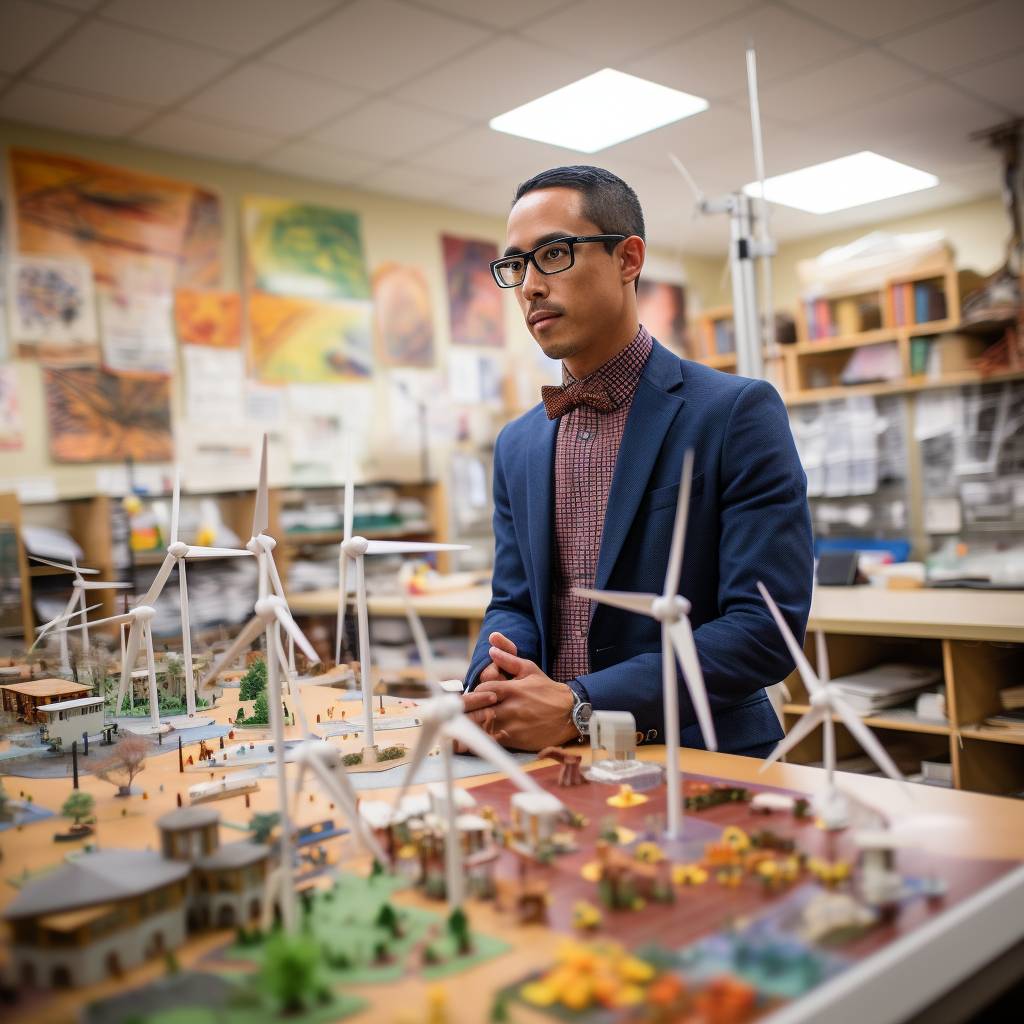In the realm of technology and electronics, Hamed Nademi has always been a standout figure. As a child, he was fascinated by the intricate world of electronic devices, their complex wirings and coils, and the magic they created. His father, a teacher, and his grandfather, an electrician, were instrumental in shaping his passion for technology. Their influence was evident in the way he would fix household items like televisions or cars with a sense of curiosity and creativity. Today, Nademi has transformed his childhood fascination into a thriving career as an assistant professor in electrical engineering at Cal State San Marcos.
Nademi’s work now revolves around the field of renewable energy, where he is spearheading four groundbreaking projects. Each of these projects is unique in its own right but is also designed to function in an interdisciplinary manner.
The first project involves breathing new life into an unused golf cart. Nademi and his team have transformed this cart into a self-sustaining vehicle powered by a battery or solar energy. The battery is charged by solar photovoltaic (PV) panels, thus enabling the cart to recharge itself while in operation, given there is sufficient sunlight.
The second project is the development of a microgrid system. This system comprises battery modules for energy storage, solar PV panels, and a small residential wind turbine. The battery can harness energy from both solar and wind sources, making it a versatile solution for renewable energy. This project is particularly significant as creating an efficient control scheme for such a microgrid system is an open challenge in the industry.
Nademi’s third project is a unique amalgamation of the above two projects. It involves using different energy resources from the microgrid system to power the golf cart motor. The golf cart can then be driven and recharged using energy from solar panels mounted either on the cart or on a ground mounting kit.
The fourth project takes inspiration from nature, specifically the swimming patterns of elephants. It involves developing a marine energy prototype which consists of a four-cylinder piston that extracts energy from ocean or sea waves to create compressed air. This compressed air can then generate electricity that could be used to power system lights in the ocean or transferred to an electricity utility power grid, similar to what SDG&E uses.
These projects are not just about creating renewable energy solutions; they also involve advanced electronics, computers, and programming languages. For instance, coding plays a crucial role in developing efficient control schemes for the microgrid system and in optimizing the energy extraction process of the marine energy prototype.
Nademi’s work is a testament to his passion for technology and his commitment to creating sustainable solutions for our energy needs. His projects are at the intersection of electronics, renewable energy, and environmental sustainability, making them highly relevant in today’s context. His innovative approach to problem-solving and his dedication to teaching his students about renewable energy are truly inspiring. These projects are not just paving the way for future technological advancements but are also shaping the next generation of engineers and scientists who will carry forward this important work.
